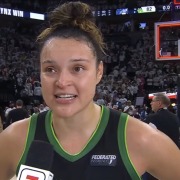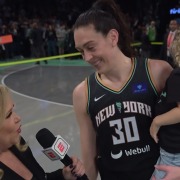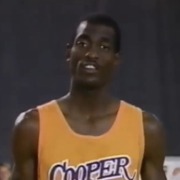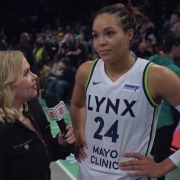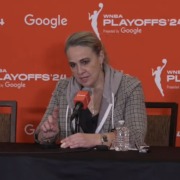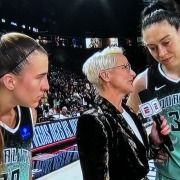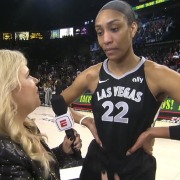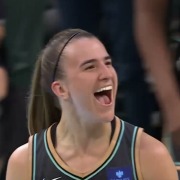Mateo’s Hoop Diary: Champion Celtics put Knicks to shame and tie the single-game 3-point record in the season opener
The Champs got their new jewelry, raised their 18th championship banner and outclassed the Knicks in the season opener, unleashing a record-tying 3-point bombardment.
Kristaps Porziņģis was absent for the Celtics as he recovers from surgery on his left leg.
The hosts started off by attacking Karl-Anthony Towns for multiple buckets at close and long range. They subsequently had a 20 point lead with a minute to go in the first frame.
Jayson Tatum, who was guarded by Mikal Bridges before the switch, downed four trays, three off the pick and pop, and another isolating Jericho Sims for a deep pull-up at the top of the key. The rest of Gang Green sprinkled in six of 11 3-pointers.
On the other side, Brunson maneuvered to the interior, dropping in two layups and nailing a baseline jumper. And Miles McBride provided seven digits off the bench. But Bridges fired four jumpers, all looking horrendous because of his slow release and fractured mechanics.
Brunson continued providing relief, attacking in transition and canning a left-wing triple over Al Horford. And McBride and Towns broke into double figures. Defensively, they cranked up their defensive intensity, holding the Celtics to five straight misses early in the quarter. But it didn’t last long.
Tatum checked back in and hit his fifth 3-pointer on the left side while guarded well by Bridges. Then he splashed his sixth, checked tightly in the right corner by Bridges, pushing the champs past 70 points. Defensively, the best possession was when Brown forced an eight-second violation in the back court while checking Brunson.
Knicks coach Tom Thibodeau presumably had a conniption in the locker room at halftime. His team made 11 of 18 baskets in the second quarter. The hosts countered, making 11 of 22.
At that point, the Celtics led 74-55. They had an edge on the glass by eight, were ahead in paint points at 24-18 and made 17 of 32 3-pointers.
Afterward, the Celtics started the second half making seven of eight triples in over six minutes, forcing a Knicks stoppage as the scoreboard read 99-70. As the quarter went on, Tatum toyed with Sims on the right wing, letting him come up close to defend and then successfully pulled up in his eye.
Defensively, the champs didn’t show much resistance, allowing the opponents 57.1% % accuracy in the frame.
Next, the fourth quarter started with the Celtics on top by 26 points. The threes didn’t slow down much to begin the quarter. Boston rattled off three more, tying the record for most in a game. They also missed 13 in a row, looking to claim sole possession of the record. Momentarily, the lead swelled to 35 points.
The Celtics won 132-109. They had an advantage on the boards by six and collected 30 paint points, 12 on the break, 16 via second chances, 19 off turnovers and 19 from the bench.
Tatum had 37 points on 14 of 18 attempts, including eight of 11 triples, with four rebounds, 10 assists, one block, one steal and one turnover.
Derrick White logged 24 digits on eight of 13 tries, with three rebounds and four assists.
Brown put up 23 points on 39% shooting, with seven rebounds, one assist, one steal and one giveaway.
And Holiday recorded 18 points, making 78% of attempts, with four rebounds, four assists and one steal.
The Knicks had 42 paint points, 13 on extra tries, four in the open court, two off turnovers and 43 from the reserves.
Brunson scored 22 points on nine of 14 attempts, with one rebound, two assists and four turnovers.
At the postgame presser, Celtics coach Joe Mazzulla said his championship ring is too big, he’ll never wear it, it’s cool to have, but he likes the banner more.
Regarding tying the 3-point record and trying to break it, Brown said, “It was almost like we got jinxed or something… once the crowd got into it and we started hunting them, we couldn’t even hit the right side of the barn. Everything was off; we got a bunch of great looks, but it was like a lid on the basket.”
—
For more info on the Miami Heat, subscribe to Off The Floor.


